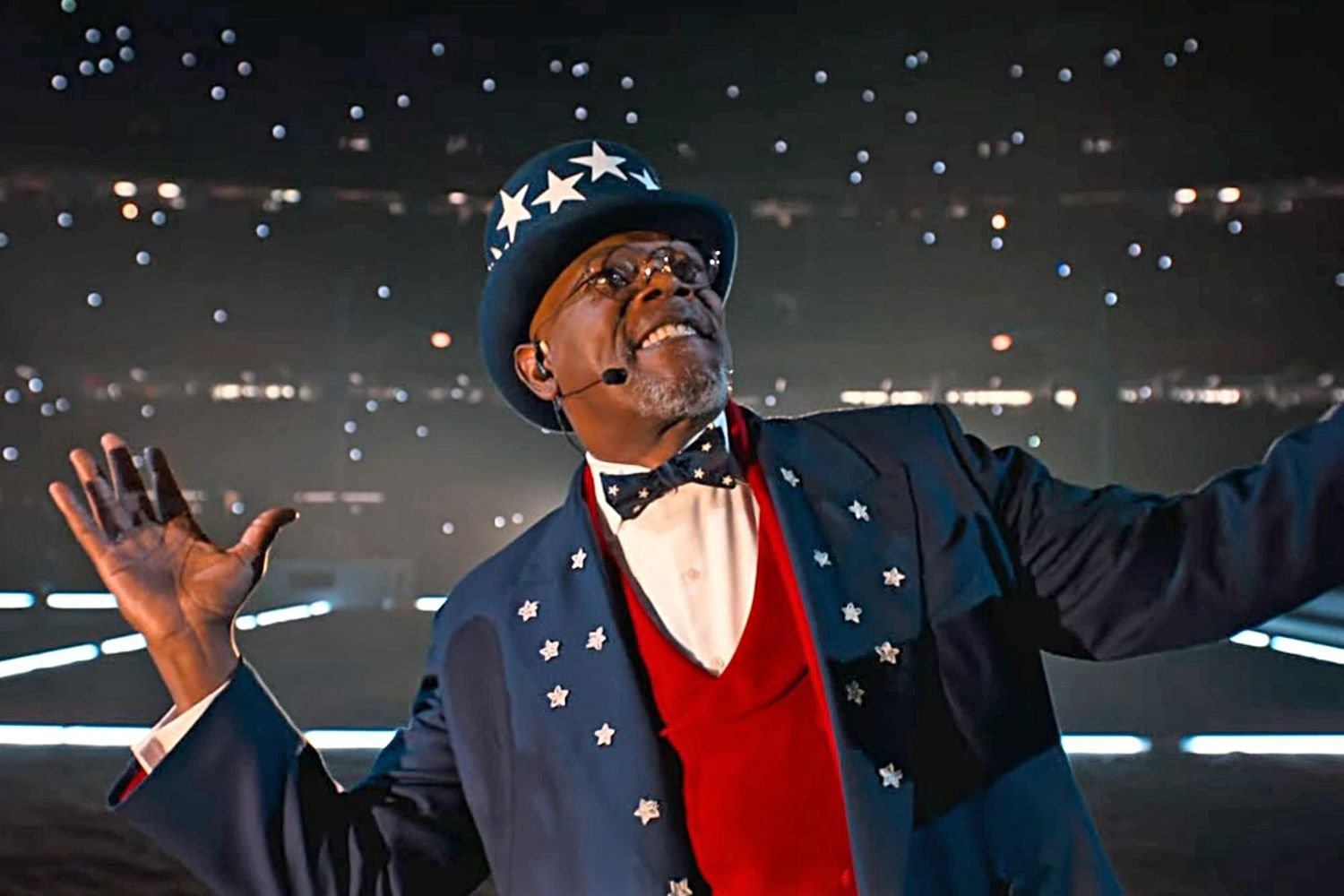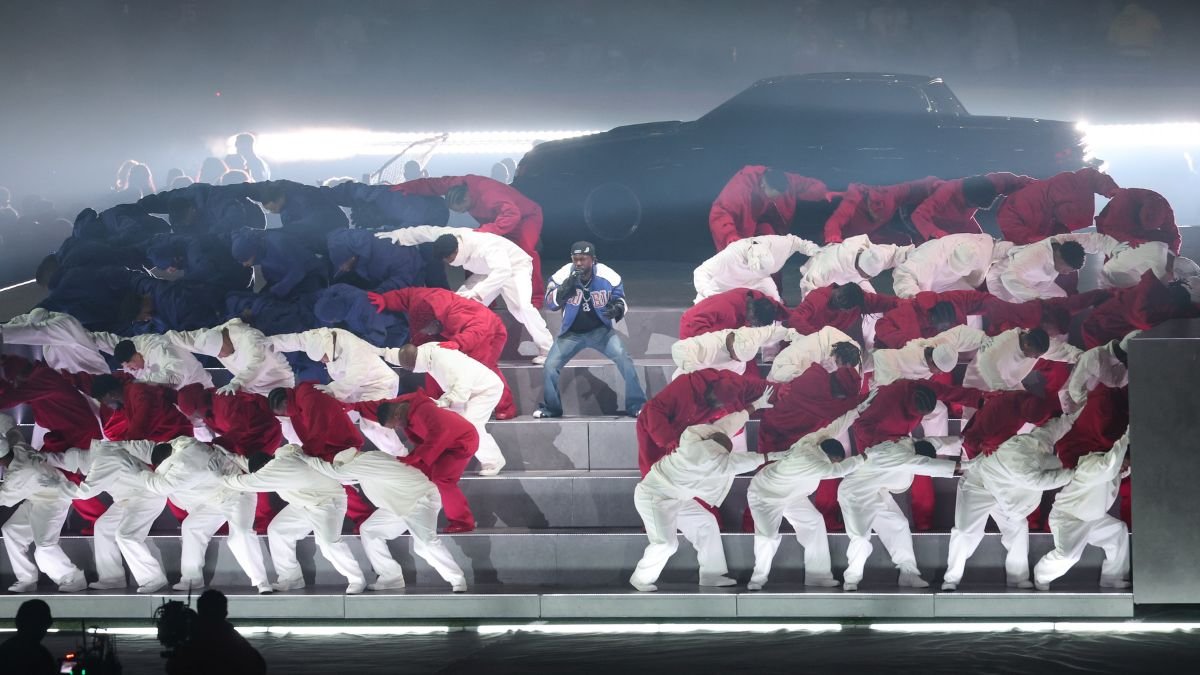Kendrick Lamar's Super Bowl Halftime Revolution
Yes, Kendrick Lamar humiliated Drake on national television in front of 130 million viewers. But this was merely a facade, expertly crafted to distract the less perceptive from the deeper message. Kendrick delivered the most contextually rich and revolutionary halftime performance in Super Bowl history.
The story begins with Samuel L. Jackson portraying Uncle Sam — a symbol of America, nationalism, and patriotism. It’s worth noting that historically, Uncle Sam has always been depicted as white. He invites us to the "Great American Game," though we know it’s not really about football. This is a reference to how those in power want us to behave: obedient, quiet, comfortable. The stage is designed like an Xbox game controller. Kendrick is on stage, and that means… Game On.
"You wouldn’t get the picture if I had to sit you for hours in front of the Louvre," Kendrick declares, acknowledging that what he's about to do won’t be understood by those whose minds aren’t tuned to perceive it.
The Revolution Will Be Televised — "You picked the right time, but the wrong guy," Kendrick boldly states, alluding to the 70s poem and song, "The Revolution Will Not Be Televised." This became an anthem for the civil rights movement, symbolizing the struggle for Black rights. The message was clear: your fight won’t be televised, and no one will fight it for you. If you want change, rise up.
Now, with 13 minutes to broadcast his message to the nation, Kendrick declares: "The next 13 minutes are mine to air my message. But remember — you chose the wrong guy."
Next comes the song with the most literal title, "Squabble Up," interrupted by Uncle Sam shouting, "Too loud, too reckless, too ghetto. Mr. Lamar, do you really know how to play the game?"
And Kendrick does know. He responds with "HUMBLE.," a track that, in this context, takes on a new meaning. The iconic line 'Sit down, be humble' serves as a clear commentary on the obedience and submission expected from citizens by those in power. But the visuals clash with the song’s message. One of the most powerful images of the night shows Kendrick’s dancers, dressed in blue, red, and white jumpsuits, forming the American flag. But the flag is split in two, unable to unite because "I got Cocaine quarter piece, got war and peace inside my DNA."
As this unfolds, a barely noticeable shot shows the dancers, who were once part of the flag, now forming a "blue line" — the dividing line between law and order, and chaos in society (the blue line represents police).
During the performance of "euphoria," a new message appears in the stadium: "Warning Wrong Way," signaling that Lamar and his audience are being watched, with a subtle reminder not to overstep. But on the next track, "Man at the Garden," Kendrick questions why certain people think they can dictate life and force others onto "their path" without understanding the struggles of the people they’re judging.
As Kendrick remains "too loud, too ghetto," Uncle Sam reappears to remind him of the power structure and punish those who resist with a "Deduct a Life" line — a painful reference to those who have lost their lives in the fight for freedom, or at the hands of police, simply because of their skin color.
The song "Peekaboo" plays in a confined space, reminiscent of a prison yard — a rectangular area with only the sky visible, reinforcing themes of confinement and oppression.
Then, traumatized by repression, Kendrick delivers "Luther" and "All the Stars" with SZA. These are more lyrical, pop-infused songs — healing tracks, offering a moment to catch one’s breath and reflect on the next course of action.
At this point, Uncle Sam reappears, praising Kendrick for following the prescribed script: be quiet, be calm, be… hell no, Kendrick responds.
As the intro to 'Not Like Us' begins, Kendrick declares: 'Forty acres and a mule, this is bigger than music. The "40 acres and a mule" reference harkens back to a broken promise made to freed African Americans during the Civil War. They were promised land they once worked as slaves, but after Lincoln’s death, Andrew Johnson tried to reverse this, betraying those who believed they would finally own their land. This is bigger than music; it’s a lie — a centuries-long deception. Most of the land allocated during the war was returned to its pre-war white owners.
Not Like Us' opens with a scene of people lying on the ground, packing three references into just three seconds. First, a nod to Keith Haring, whose art stood against racism and capitalism. Second, the dead bodies symbolizing those who fought for justice—except for the ones in the inner circle, who remain standing. And third, if you look closely at the poses of the fallen… if you don’t see it, ask the Tesla guy who likes to raise his hand in the air.
And yes, there was a diss to Drake, too. A reminder that you’re not hating on the right person unless you do it like Kendrick Lamar. The chain with "a minor" dangling from Kendrick’s neck, the smug smile, and the stadium singing "a minor" — not a musical note, with Serena Williams (once Drake’s ex) dancing the "crip walk." This move, rooted in gang culture, symbolizes that no one is safe from violence, not even the rich and powerful. It’s a simple gesture, but it carries deep historical and cultural weight. If you’re "not in the gang," you stand alone.
A legendary rap beef will go down in history, and Drake’s case is a reminder—don’t climb the mountain in flip-flops. But ultimately, he is insignificant in this story, merely a façade hiding the 'bread and circuses' agenda, which serves to distract those who aren’t supposed to listen from the real message.
The final song, "TV Off," is quite self-explanatory. Kendrick’s 13 minutes are up. Another truth won’t be shown here.
Game Over.
Turn the TV Off.
And Stand The Fuck Up.
9.5/10






